|
|  Deadly Snakes, Killer Bees & Bloodsucking Bugs 1) Snakes are VENOMOUS not POISONOUS (venom is injected by fangs or stingers, poison is ingested) 2) Boa Constrictors have eliptical pupils, nostrils and pits and they are NON-VENOMOUS 3)Coral snakes have round pupils, nostrils and no pits and they are THE MOST VENOMOUS SNAKE IN BELIZE 4) The ventral scales on the tail of a snake say absolutely NOTHING about its toxicity. Additionally, here in Belize, the best way to determine a venomous snake is by the features of the two most prominent types: Coral snakes, and crotalid viper species. 1) corals are generally characterized by yellow, black and red banding (red touch yelow kills a fellow), however one species has red and black banding alone, and is mimicked by a harmless slug eating snake with the same coloration. If you can't distinguish the two, leave both alone at all times. They will not harm you under any circumstances if left alone. 2) Pit vipers (fer de lance, jumping pitviper, rattlers) other than the obvious rattle on a rattlesnake, other pit vipers are generally characterized by a large triangular-shaped head and pits in the nostril area. They have elliptical pupils and a brow ridge over their eye (giving them a constantly angry look). The coloration in pit viper species of belize is generally bland with light/dark browns, grey, and black. There is supposedly an eyelash pitviper in Belize which can be yellow or green, but they are extremely rare and would be impossible to misidentify, because they have eyelashes. Living in the jungle is great if you don’t mind a few minor nuisances. The spiders, scorpions, killer bees and army ants I can deal with. The deadly snakes and blood sucking bugs that defecate on your face and kill you can be cause for concern. I have found both in or around my home many times. A friend of ours came down from Indiana to attend to the impending birth of our child. During a nighttime walk around the grounds she was commenting on how magical our place was, she said “…even the ground sparkles.” Yes, the ground does sparkle, with the eyes of many hundreds of spiders that are lurking in the grass. I would say that in any 10 foot square section of grass there could easily be 25 spiders and when you shine your light on the ground their eyes look like shiny crystals. Beautiful, yes, unless you are scared of spiders. A good friend of mine seemed to get bit by a spider on half his visits here although after nearly 8 years I have only been bitten once when I failed to sufficiently shake out my boot. They are everywhere but normally not dangerous. 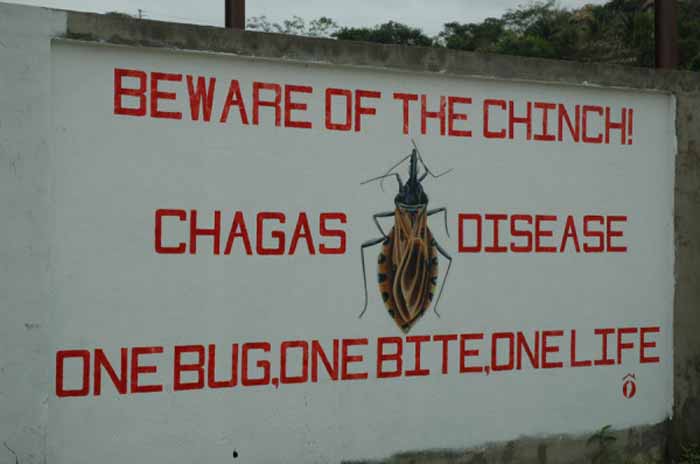 Some time ago we looked into putting bees in our orange grove to produce “bee products”. Our entomologist friend is an expert and assured me that while all bees in this area are “Africanized” (killer bees) we would start by importing Italian bees from Hawaii, they were not really dangerous. That made sense to me since the term “Italian bees from Hawaii” makes me feel nice while “Africanized killer bees” makes me want to take off running. He did qualify the statement by saying that all the colonies would become Africanized after a while but we would do things to slow that down. It sounded like bee segregation. A vet friend of mine strongly discouraged me from this endeavor since he has seen these bees kill large animals including a horse. A close neighbor of mine was attacked by killer bees and stung about 70 times. He lived but only because he made it to his house where he vomited, excavated his bowels and then passed out. He is one tough old man. Shortly after moving here I was at home and noticed the Outpost was being invaded by army ants. Since I am not a fan of being invaded in general, I promptly broke out the bug spray and proceeded to kill many hundreds of thousands of ants. During the course of my retaliation a neighbor showed up and informed me the ants were good, they clear out all the other bugs and they leave after cleaning house. OK, got it, army ants are the good guys. 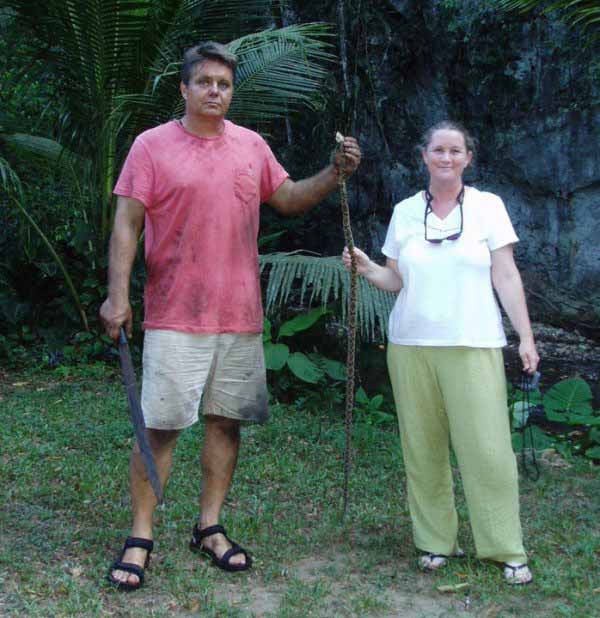 The leaf cutter ants are another matter, not only are they trying to decimate our small orange grove but when they get on you, and they do, they all seem to bite at once, as if on some secret signal. Each bite is pretty painful and often produces an aggravated, pimple looking thing. I have thought numerous times how glad I am that ants aren’t the size of dogs. My battle with the leaf cutter ants is ongoing and ferocious. Normally this involves poison but I am not above saturating a nest with gasoline and setting it ablaze. This is not as effective as the poison but I find it quite satisfying nonetheless. We find scorpions in our house all the time. Mostly they are large, black and are terrifying to look at. Sometimes they have many, many tiny black scorpion babies on Momma Scorpion’s back. My young son assures me the big ones pack a wicked sting. He has been stung twice, both times sticking his finger in a hole where he thought he saw something. None of the rest of us have been stung. There’s a lesson there. 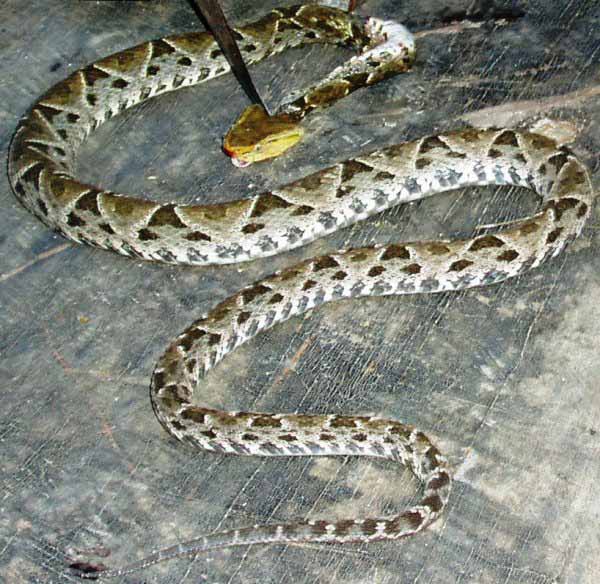 There is a bug here the locals call a “chinch bug”. It is mostly confined to Latin America. Here’s what the World Health Organization website says, “These bugs typically live in the cracks of poorly-constructed homes in rural or suburban areas. Normally they hide during the day and become active at night when they feed on human blood. They usually bite an exposed area of skin such as the face, and the bug defecates close to the bite. The parasites in the feces enter your body when you instinctively rub the bite and smear the feces into the fresh bite, the eyes, the mouth, or into any skin break.” This is also called a “kissing bug” since it is often seen on the sleeping person’s mouth. 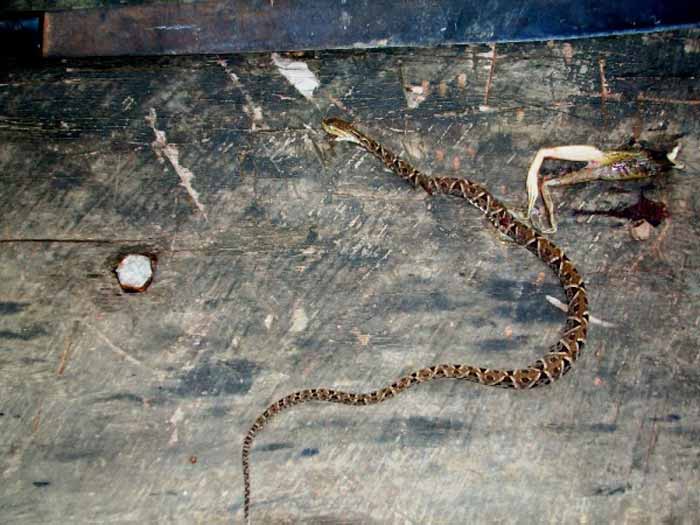 I didn’t know anything out this bug until one day I see one in our house and think, “Is that the bug on the sign?” There is an old painted sign in town with a picture of the bug with the caption, “One bite, one life”. Yep, same bug. What is it doing in my bed? This led me to internet research and paranoia. I learned the following:
I just read an article that says Chagas disease may be “The New HIV/AIDS of the Americas”. Seriously? You think someone would have told me that. We are all going to get tested and have taken other measures to protect ourselves. 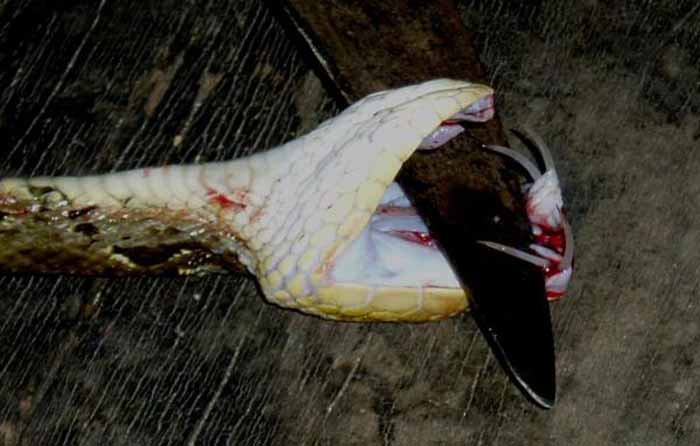 One particular hot Belizean day I was working on my diesel generator which was not cooperating despite my best efforts over several hours. Much to my delight a guest of ours informed me, “There is a giant snake over on that gravel bar.” I was ready to (and wanted to) dismiss her alleged sighting but she insisted. I looked through her bird watching binoculars, located the snake and hoped it was a stick. “I saw it swim through the water and go to that exact spot.” She was very helpful! I couldn’t argue with that so I choose my weapons, a canoe paddle and a machete, and crossed the creek to the gravel bar under the watchful eyes of several gathered guests. The snake was next to a large fallen limb and doing an excellent job of disguising itself a stick. Its head was raised about 2 feet off the ground, cocked back and it was obviously waiting for a frog (or a gringo) to come by. My plan to break it’s back with the canoe paddle before I gave it the machete (standard procedure) didn’t seem like a great idea since this one was already up high and ready to strike, although he had his back to me. I choose the “Kill It With A Rock” method but my first throw missed. He forgot about frogs and gave me his full attention. Looking at this thing, looking back at me, head cocked back, sitting on its coiled body, I was pretty scared. I gave some serious thought to how far it could spring and determined I was just out of range. This calculation was based on the fact that I wasn’t backing up and wasn’t getting any closer so I must be just out of range. I knew I wasn’t “safe”. My second rock struck it on the coil, knocked it into the water and seemed to stun it. Forgoing the paddle I went with the machete and with a lightning fast, perfectly placed strike (kind of) I killed it. The crowd went wild and I heard someone scream, “You are a jungle god.” I’m not a jungle god but I didn’t mind that she said it. We examined the dead snake and found that it had two sets of giant fangs (see picture above). Terrifying. I also noticed it had a lump in it. We cut the head off and my 10 year old son grabbed it by the tail and squeezed the object out like you might squeeze the last bit of toothpaste out of a tube. It was a mostly decomposed frog that seemed to be missing its head (see picture above). I found this as gross as my son found it delightful. Only a couple of days ago we returned from town to hear that one of our guests had been bitten by a snake and been rushed to the hospital. Turns out the small pickup we had seen wildly careening down the dirt road had contained our snake bite victim. (My wife had correctly deduced the truck was in an “emergency situation.”) The young lady and her friend had gone for a walk in the jungle and she had been bitten on the calf by a snake she later identified as a Fer de Lance. She still had a 10 minute hike out of the jungle and it took them another few minutes to reach a neighbor’s, identify the situation and get a ride out. A little over an hour after she was bitten she was at the closest hospital and receiving the anti-venom. She never developed really severe side effects which leads me to believe that she did not receive a large dose of venom. Apparently, older snakes are able to control the amount of venom they release, even inflicting a “dry bite” while younger snakes may release all their venom in any one bite. From that standpoint, it is better to get bitten by a larger, mature snake than a smaller, younger one. (If you had to choose.) This young lady certainly got the scare of her life and was in a lot of pain but did not have to go through some of the more horrifying effects of a large dose of venom from a Fer de Lance. She had some issues with swelling while in the hospital but was released and went back to the UK to certain stardom and probable nightmares. The challenges of living in the Belizean jungle are many and certainly these types of things can be significant. Most people who live in Belize live in more populated areas and never have to deal with most of these issues. When we moved here we essentially had no idea what we were getting into and have learned many lessons the hard way. We determined to educate ourselves, take precautions, use common sense, not live in fear, have an emergency plan and trust God for our safety. So far, so good.
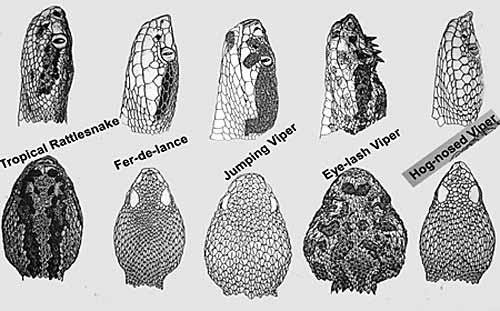
There are as many as 62 species of snakes in Belize; however, only eight of those are venomous, according to the Belize Zoo. One medical website states that an estimated five million people worldwide are bitten by snakes every year. Of these, as many as 125,000 bites are fatal. The Belize Zoo’s advice “is not to attempt to restrain, subdue or pick up any snake found in the wild, especially venomous ones. However, the reality is that sometimes snakes are not only in the wild; they have found their way into populated areas and can be found in your yard and even in your home.” I live on Fabers Road, and had an unfortunate encounter with one just last Friday. A snake was the last thing I expected to see when I opened my clothes closet. I was scared, and I am sure that there are other persons whose living space has been invaded by snakes. A few encounters with snakes have made the news, such as an incident in Xaibe, Corozal District, where a man killed a snake, and the snake killed him. In March 2007, Cirilo Novelo, 31, went to assist a woman who was calling for help, since a snake had found its way into her yard. Novelo managed to killed the snake, but not before being bitten by it. Novelo did not consider it urgent to visit the hospital to seek medical attention for the bite; that was probably because there wasn’t much of a visible flare-up around the bitten area, which happens with coral snakes. However, the following day he found himself having trouble breathing; he was then rushed to the Northern Regional Hospital (NRH). It was a little too late, however; Novelo died at approximately midnight as a result of being bitten by the snake. Also, it was believed that a coral snake bit Monique Moore, 11, of Teakettle, Cayo District. The incident occurred in February 2013. Moore was walking with her cousin, Amelisha Reyes, 15, on Young Gial Road in the village on a Sunday night, heading to church. It was then that she accidentally kicked a snake, which bit her. Moore never made it to church; she collapsed on the road and later succumbed to her injuries. Earlier this month and in July 2008, Gilbert Usher, better known as “snake man,” was bitten by a fer-de-lance (Yellow Jaw, Tommy Goff), which is known to be the most common and dangerous snake in Belize, measuring up to 8 feet in length. He was able to survive both potentially deadly attacks. How can we tell whether a snake is venomous or non-venomous? Jamal Andrewin of the Belize Zoo told Amandala, “Snakes with rounded pupils are non-venomous snakes; however, the boa constrictor is the only non-venomous snake that doesn’t have rounded pupils; instead, their pupils are slit-shaped and they are the largest snake species in Belize, which can grow up to 12 feet and live up to 40 years.” Meanwhile, venomous snakes have “elliptical or slit pupils, and an arrow or spear-shaped head with broad jaws and fangs.” And while we do not like these predators, they do make a positive contribution to the ecosystem, since by hunting rodents and insects they help to control the population of these pests. Here are a few steps to help keep you safe: 1. Calm down and resist the urge to attack the snake; to the snake you are a “bigger predator and it won’t attack you unless it feels threatened.” (wikihow.com) 2. If you feel confident enough you can remove the snake yourself from your home (non-venomous ones); first, “create some distance between you and the snake.” 3. Sometimes you may venture into the forest for camping or hiking; you must be on the alert for snakes, since the wild is their habitat. While walking in these areas, try to keep on a clear path and look where you are stepping to ensure that you do not step on a snake. 4. According to the Belize Zoo, “snakes can strike to a distance of about 2/3 of their body length. When you come across a snake, giving it enough space to flee, and keep out of its strike range.” 5. Children succumb easier to a snake bite, as was the case with Monique Moore, 11. While Cirilo Novelo, 31, was also bitten by the same type of snake, he did not feel the effects of it until the following day when he had difficulty breathing. This is because children have smaller bodies. Coral snakes – the type of snake which killed Novelo and Moore — are very colorful, with the head having black and red and yellow bands that touch each other. The snakes have an average length of 24 inches and a maximum length of 47 ½ inches. There is also the Central American Coral Snake, which is similar to the coral snake. The fer-de-lance (Yellow Jaw, Tommy Goff) is known to be Belize’s most dangerous snake. “Snake Man” was bit, not once, but twice, by this type of snake, but he lived to tell the tale. According to Diedra Mahler, environmental educator of the Belize Zoo, other venomous snakes include the Central American rattlesnake, which is usually brown to gray in color, with “a black diamond pattern down the dorsal body surface, fading towards the tail”; the Hog-nosed Viper, which is dark to reddish brown in color, and has a narrow cream mid-dorsal stripe, with small, square brown or black markings on either side; the Mexican Moccasin, which is a brown snake with irregular blotches of white down the entire dorsal surface of the body and a tail that varies in color, from pale white to yellow; the Jumping Viper, which varies in color, but has a pattern of adjoining saddles down the entire dorsal surface of the body; and the Eyelash viper, which is “a uniquely camouflaged snake, which is most often found on trees in a humid forest. Their overall body is green, with irregular blotches of brown, yellow, and white.” The effects of the toxins transmitted through snake venom can include local swelling, capillary oozing, necrosis, generalized damage to muscles, and damage to heart or kidneys. Treatment should never be delayed, although finding out the type of snake that bit you is helpful in order to determine the type of anti-venom that should be used as part of such treatment. While waiting for the ambulance, according to www.auroville.org, “the victim should be kept calm and have restricted movement. Assure the victim and do not let him panic. When under panic, it will enhance heart rate, causing the venom to circulate faster in the body. The affected area may swell; therefore, remove any rings or constricting items. It is necessary to keep the patient warm, but the victim cannot have any water or food. It is not advisable that you try to suck out the venom; instead, if you have a suction device, use it to try to aspirate the venom out of the puncture marks.” 

Click here to return to the main page for Caribbean Critters
|
